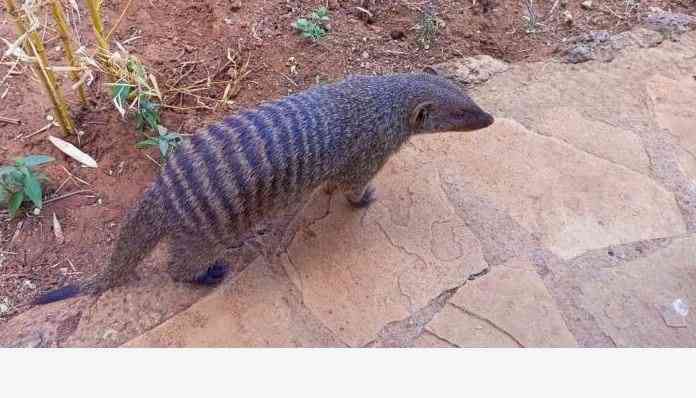
While visiting wildlife spaces, many visitors focus on the 'big five', and are oblivious to the 'small cats'. Like their 'big five' cousins, they face the threat of habitat loss, poaching, and conflict with humans and livestock. Research indicates they receive less than one per cent of the total conservation funding available for wild cats. As a result, most remain understudied and under-protected. Here are some of Africa's wild cats.
The black-footed cat: It is the smallest found in Africa - South Africa. It weighs 1.6 kg. As tiny as it may be, it has the highest hunting success rate in the entire cat family. Its meals comprise rodents and small birds. It has a huge appetite and can consume up to 14 prey items in one night. The International Union for Conservation of Nature's red list (a critical indicator of the health of the world's biodiversity) describes it as "vulnerable" with just over 9,700 mature individuals remaining in the world.
The Caracal: The cat described as "an elegant cat" wears short-brown fur on the back and sides. Its chin, throat, and underside are white. The caracal has distinctive long black ears with white at the ear base, and log tufts of black fur at its tips. The caracals prefer woodland, savannah, and scrub forests, but often are found in abandoned burrows, rock crevices, or dense vegetation. They are carnivorous and prey on birds, rodents, and small antelopes. When they have had their fill, they store the remnants of the meal in tree forks or dense shrubs for later feeding. They are habitats of Kenya, Tanzania, Botswana, Namibia, Zimbabwe, South Africa, and Mozambique.
The Serval: The serval is a meticulous cat with reddish-brown fur is dotted with dark spots that sometimes merge into stripes down the back. The serval's legs are long, relative to its body's size. This helps the cat to see over the long savannah grass, its preferred habitat. Its head is proportionately small compared with its body and legs. The ears are relatively long and rounded with white stripes on the back. Its habitats also include open grasslands, wooded savannahs, and rainforest fringes. The serval is a carnivore that feeds on small animals such as hares, rats, birds, frogs, and ground squirrels. Their nature of preying is fascinating to watch. They catch their prey by leaping up to about 10 feet, pounce with both front paws, and often play with their prey before eating it. The serval cat is found in Kenya, Uganda, Tanzania, Botswana, Namibia, South Africa, and Mozambique.
The African Golden Cat: The medium-sized cat is described as the most elusive of Africa's wild cats. The African Golden cat is a solitary animal that is normally crepuscular (twilight) or nocturnal. However, they have been found hunting during the day. Due to its extremely reclusive habits, very little is known about its behaviour. The cat can climb, though the ground is primarily its hunting ground. It hunts rodents, birds and small monkeys, duikers, giant forest hogs, and small antelope. They too can take on domestic poultry and livestock. The African golden cat is found in Kenya, Uganda, Angola, Senegal, and Central African Republic. It prefers forested habitats, especially rainforests.
 The Standard Group Plc is a multi-media organization with investments in media
platforms spanning newspaper print
operations, television, radio broadcasting, digital and online services. The
Standard Group is recognized as a
leading multi-media house in Kenya with a key influence in matters of national and
international interest.
The Standard Group Plc is a multi-media organization with investments in media
platforms spanning newspaper print
operations, television, radio broadcasting, digital and online services. The
Standard Group is recognized as a
leading multi-media house in Kenya with a key influence in matters of national and
international interest.

